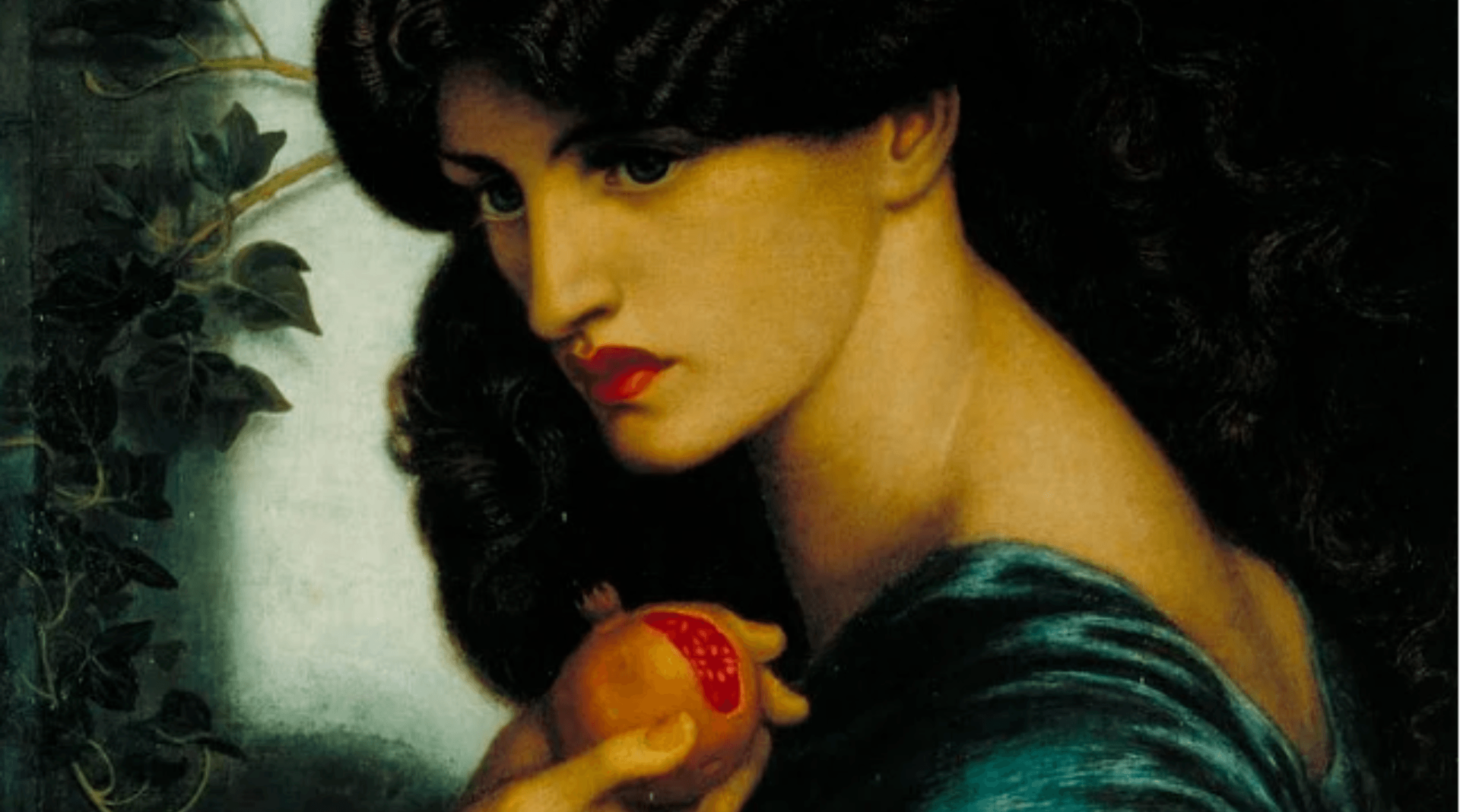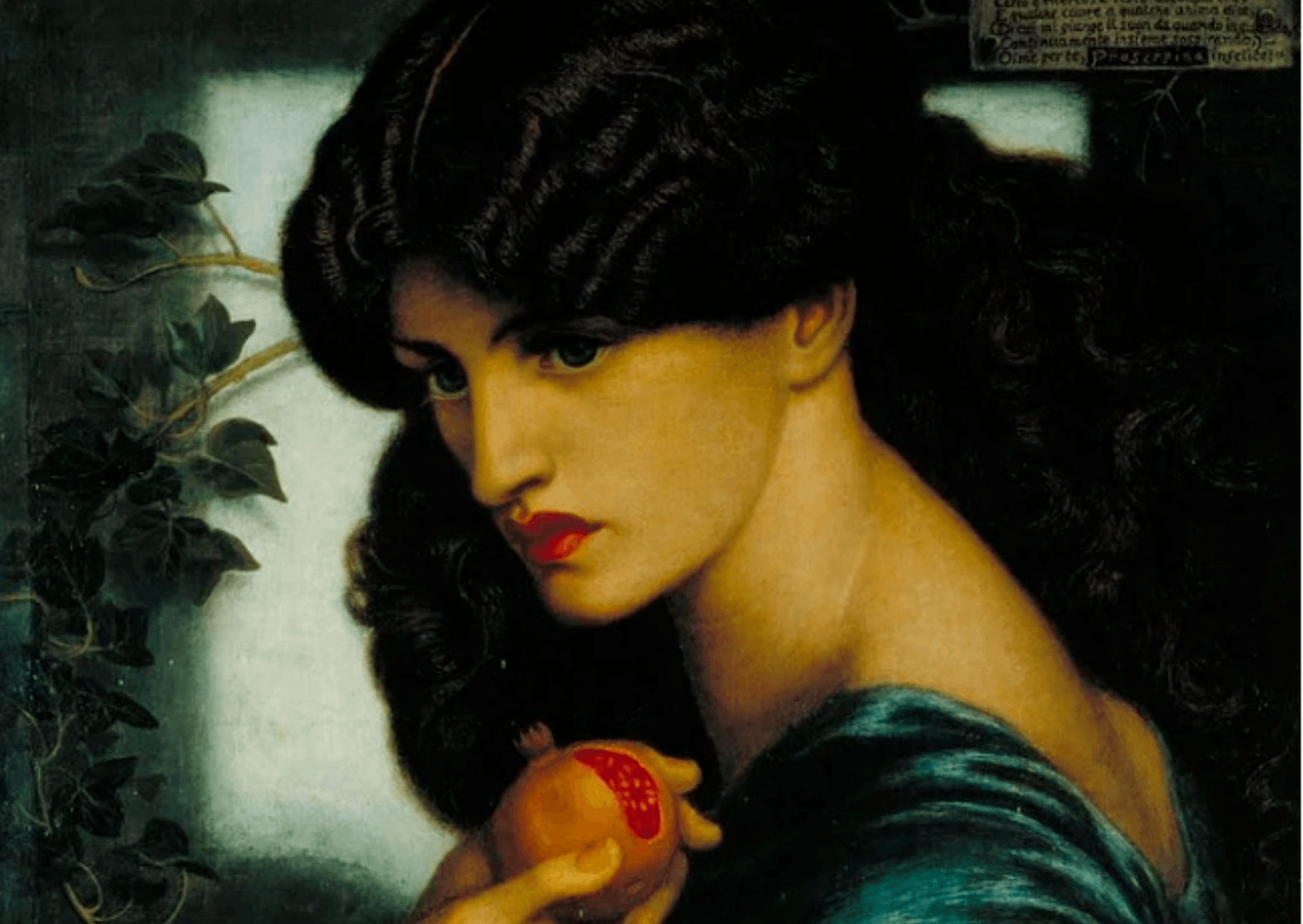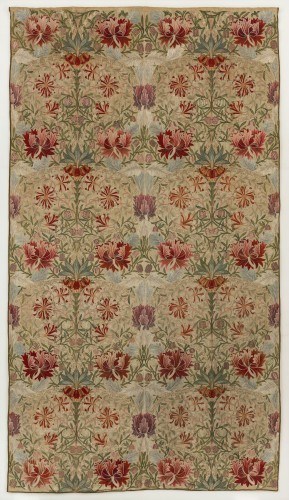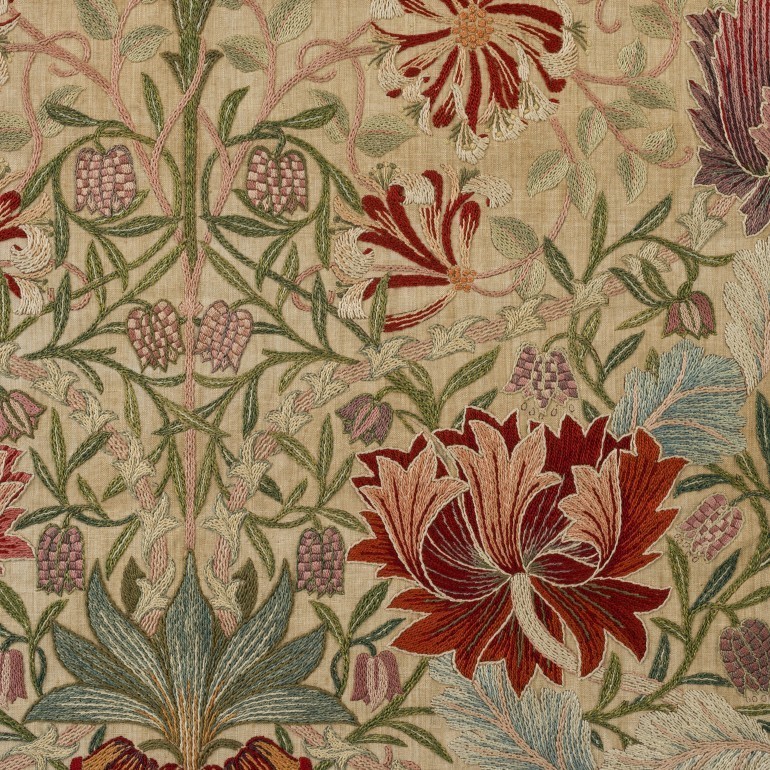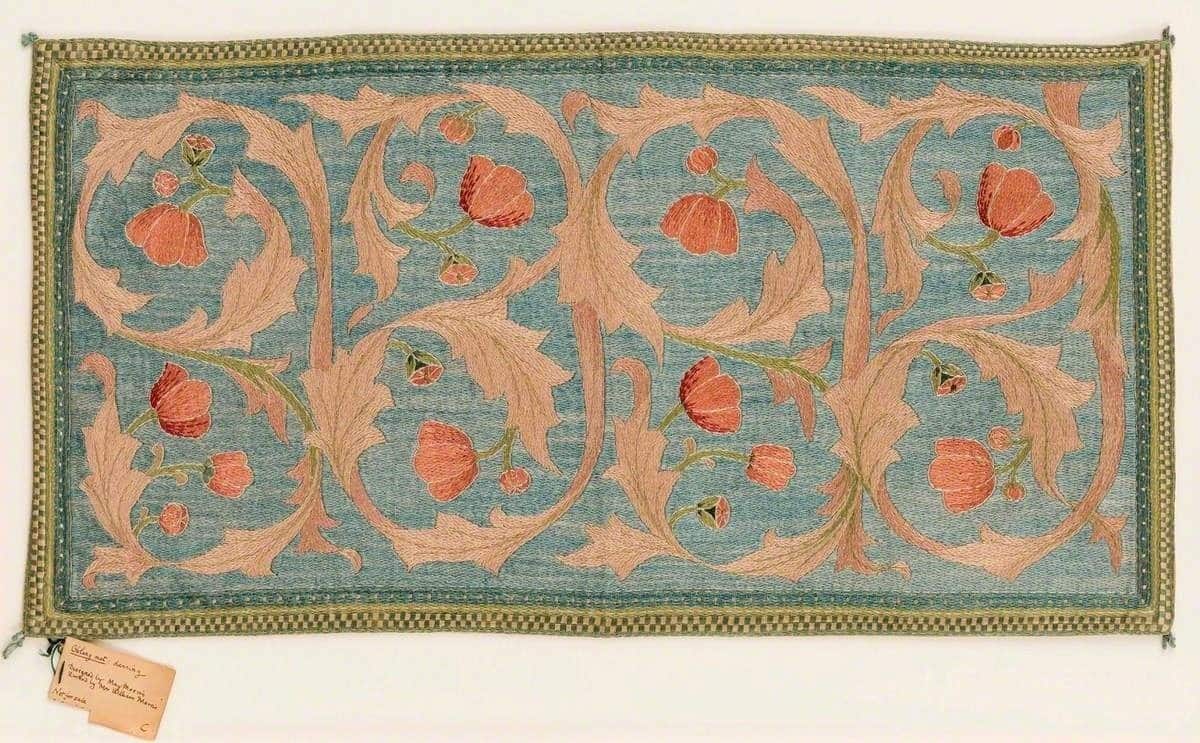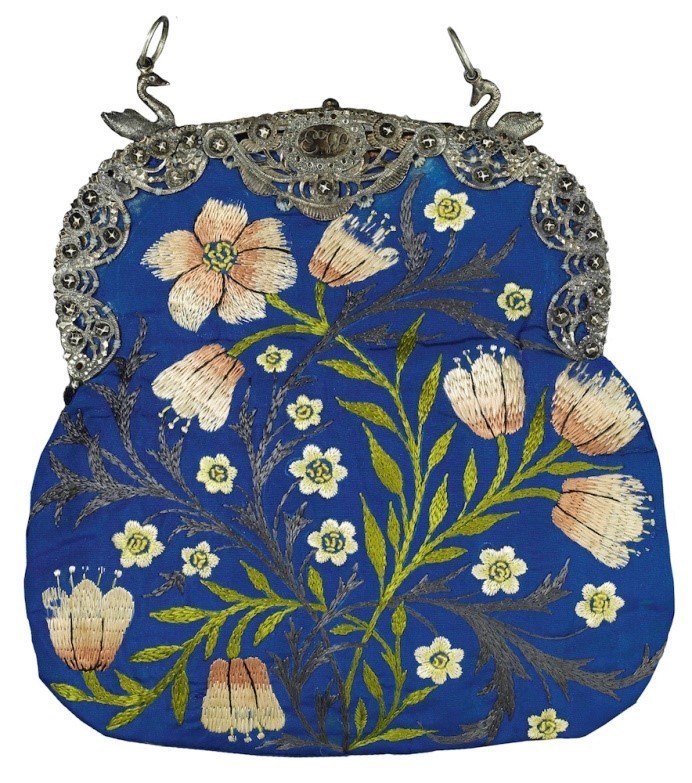Our fondness for floral patterns isn’t a secret and the organic and intricate works of William Morris have informed and inspired many of our interiors. Born in 1834 in Walthamstow, London, William Morris was a leading figure in the Arts and Crafts Movement, a man of many talents: a poet, writer, textile designer and social activist. In 1861 he founded ‘Morris, Marshall, Faulkner & Co.’ (later known as Morris & Co). His textile designs are considered to be some of his most influential work, sought to elevate the status of craft and design in a world increasingly dominated by industrialisation.
Hidden behind this influential man was his wife Jane Morris who also played a significant role in the Arts and Crafts Movement. She was known for her striking beauty and served as a muse for many Pre-Raphaelite artists, including Rossetti and Edward Burne-Jones. However, Jane was an accomplished artist in her own right and her work included embroidery, bookbinding and calligraphy. She was an active member of Morris & Co and was instrumental in the development of many of its textile designs. Despite her involvement in Morris’ work, Jane’s contributions were often overshadowed by Morris’ own fame and reputation.
Jane’s designs were heavily influenced by nature and often featured floral patterns, birds and other natural forms. Her colour choices were bold and vibrant, drawing inspiration from the rich hues of the natural world. Her embroidery work was praised for its delicate beauty and intricate detail, which demonstrated her incredible skill and precision. Some examples of her work include:
‘Honeysuckle’ – Silk and linen hand embroidered, designed in 1876 and made in 1880…
Embroidered evening bag – 1878, coloured silks on a metal mount…
‘Westward Ho!’ – Embroidery, 1885…
Jane, together with William, helped to define the philosophy and aesthetic of the Arts and Crafts Movement. They believed in the importance of handmade objects and traditional craftsmanship and were opposed to the mass-produced goods that were becoming increasingly common in the late 19th century. They also valued simplicity, honesty and beauty in design and sought to create objects that were both functional and aesthetically pleasing.
Jane Morris’s legacy as a talented artist and designer is as remarkable as her beauty and grace. Her creativity and skill helped to shape the world of design and her influence and contribution is one that deserves to be celebrated.

